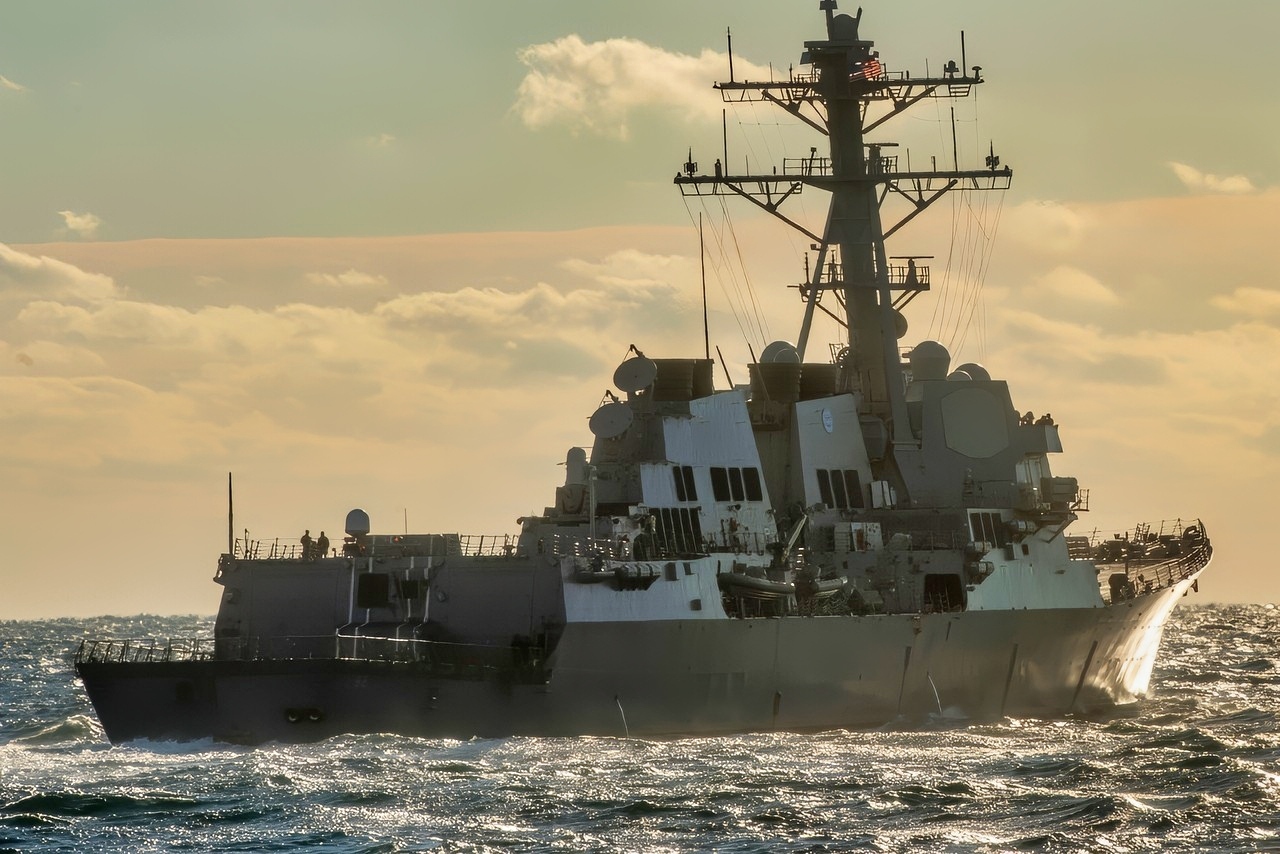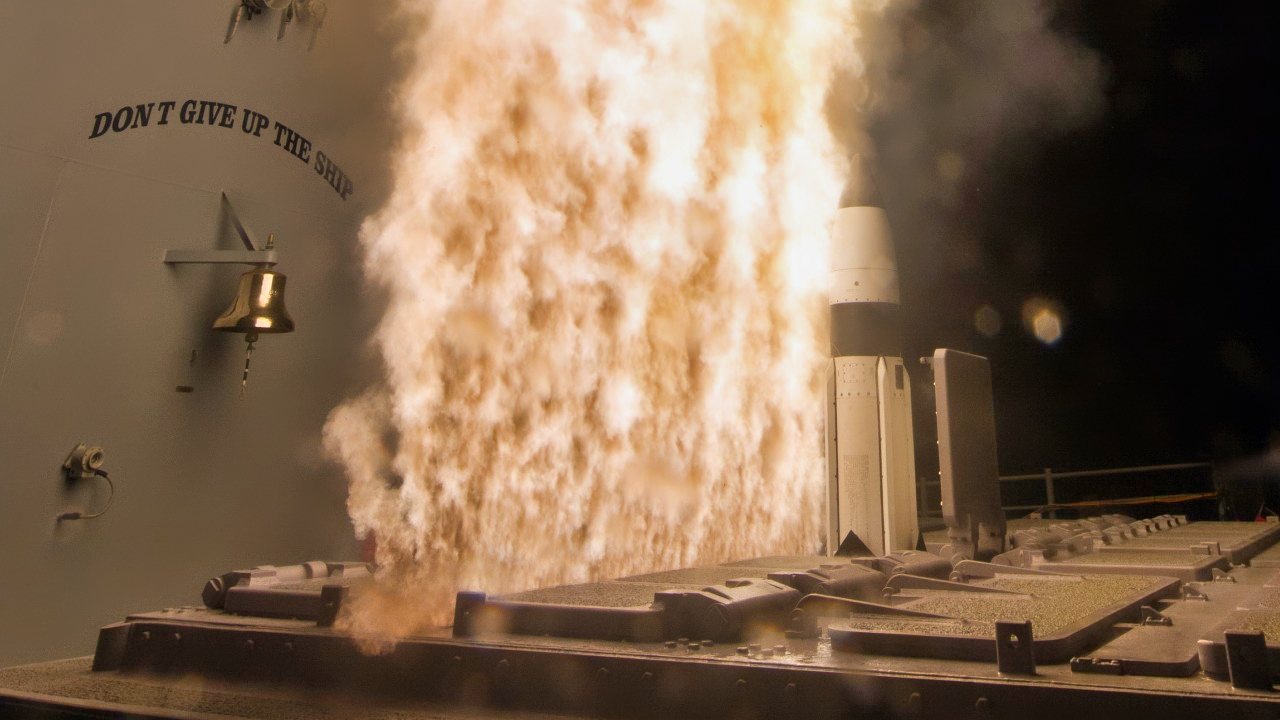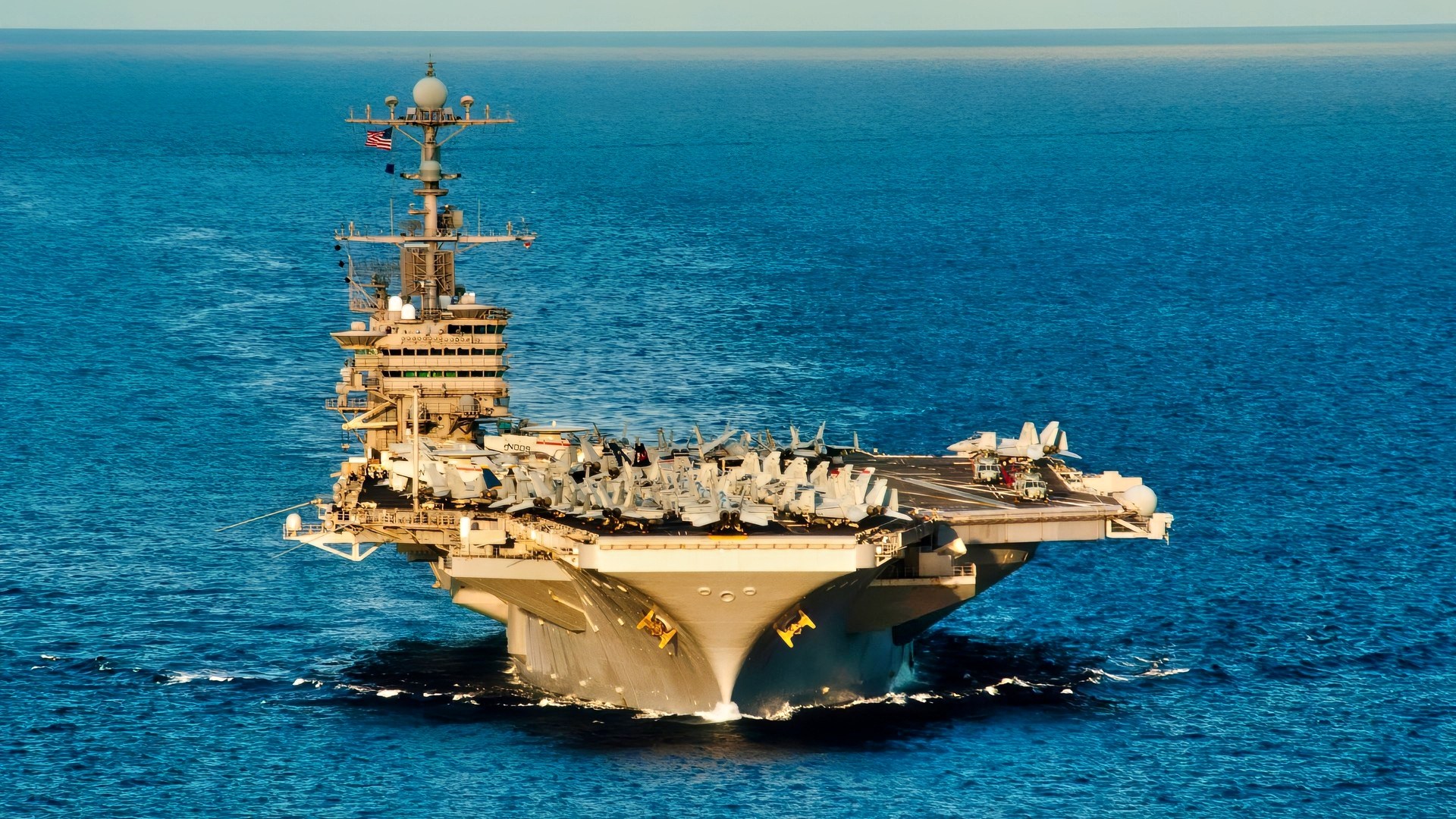Key Points and Summary – How does the U.S. Navy stop aircraft carriers from becoming old, obsolete, relics like the battleships of yesteryear?
-The debate over aircraft carrier vulnerability is intensifying due to China’s long-range “carrier-killer” missiles, which could force U.S. carriers to operate thousands of miles from shore.

Aviation Boatswain’s Mate (Equipment) 3rd Class Mark Ruiz, assigned to Air Department aboard the world’s largest aircraft carrier, USS Gerald R. Ford (CVN 78), prepares a Carrier Air Wing 8 F/A-18E Super Hornet attached to Strike Fighter Squadron 37 for launch on the flight deck, Aug. 1, 2025. Gerald R. Ford, a first-in-class aircraft carrier and deployed flagship of Carrier Strike Group Twelve, is on a scheduled deployment in the U.S. 6th Fleet area of operations to support the warfighting effectiveness, lethality and readiness of U.S. Naval Forces Europe-Africa, and defend U.S., Allied and partner interests in the region. (U.S. Navy photo by Mass Communication Specialist 2nd Class Mariano Lopez)
-The U.S. Navy is countering this threat with a multi-layered defense strategy.
-This includes upgraded interceptor missiles like the SM-6, which now feature advanced seekers.
-More importantly, the Navy is fast-tracking new technologies, including the SEWIP electronic warfare system to jam missile guidance systems and ship-based laser weapons designed to incinerate incoming threats, ensuring the carrier’s continued relevance in a contested environment.
Aircraft Carriers: The Battleships of 2025?
The question of whether new long-range precision weapons have made aircraft carriers obsolete has become so widely discussed it almost seems a cliche.
Yet the tactical, technological, and conceptual variables affecting the argument are evolving quickly.
The question gained salience with the introduction of long-range Chinese anti-ship missiles often labeled as “carrier killers”—such as the DF-26 and DF-21D.
Their purpose is to prevent carriers from operating within their striking range, which for the DF-26 is about 2,000 miles.
Without adequate defenses or evasive capabilities, carriers would have to operate thousands of miles off the coast of mainland China to stay safely beyond the range of these carrier-killer missiles.

The Arleigh Burke-class guided-missile destroyer USS Lassen (DDG 82) moves into position for an underway exercise with the British Royal Navy aircraft carrier HMS Queen Elizabeth (R08) and Pre-Commissioning Unit (PCU) Michael Monsoor (DDG 1001). The future USS Michael Monsoor is the second ship in the Zumwalt-class of guided-missile destroyers. (Photo by Mass Communication Specialist 1st Class John Philip Wagner, Jr./Released)
Back Aircraft Carriers Out of Range
U.S. Navy Carrier Strike Groups (CGSs) would be caught in quite a tactical predicament trying to operate from such extended ranges, considering the 1,000-to-1,300 mile range of an F-35B or F-35C. Would Navy carriers, then, be completely unable to project power near the coast of China?
Does this mean the South China Sea area or the waters off Taiwan are essentially off-limits to carriers during a conflict? After all, stealth is essential to a carrier air wing.
The addition of external fuel tanks can increase a jet’s radar cross section, and most fixed-wing aerial refuelers are large and not stealthy at all.
This is why the Navy wants to fast-track a first-of-its-kind carrier-launched drone refueler known as the MQ-25 Stingray.

(Jan 31, 2009) An F/A-18 Super Hornet assigned to the “Tomcatters” of Strike Fighter Squadron (VFA) 31 launches from the flight deck of USS Theodore Roosevelt (CVN 71). The Nimitz-class aircraft carrier and embarked Carrier Air Wing (CVW) 8 are operating in the 5th Fleet area of responsibility and are focused on reassuring regional partners of the United States’ commitment to security, which promotes stability and global prosperity (U.S. Navy photo by Mass Communication Specialist 3rd Class Jonathan Snyder/Released)
Ship Defenses
The Navy has maintained for years that its aircraft carriers can operate anywhere in the world, projecting power at all times and conducting successful air campaigns when needed.
While Navy weapons developers are often understandably reluctant to discuss specific ranges and capabilities related to ship defense systems, senior service leaders emphasize that layered ship defense technologies continue to evolve and break paradigms.
Aircraft Carrier Strike Groups are armed with interceptor missiles such as the SM-6, SM-2, ESSM Block II and longer-range SM-3.
Missiles have been upgraded in recent years with improved seeker technology, longer-range, more precise targeting or intercept technology, and multi-domain networking.
In essence, the munitions have all become much more adept at targeting and intercepting moving threats.

(Feb. 13, 2013) A Standard Missile-3 (SM-3) Block 1A interceptor is launched from the guided-missile cruiser USS Lake Erie (CG 70) during a Missile Defense Agency and U.S. Navy test in the Pacific Ocean. The SM-3 Block 1A successfully intercepted a target missile that had been launched from the Pacific Missile Range Facility, Barking Sands, Kauai, Hawaii. (U.S. Navy photo/Released)
The SM-6 operates with an active seeker, meaning it can adapt to moving targets in flight and does not need a ship-based illuminator. Such increased targeting and maneuverability massively improves the probability of a successful intercept.
Lasers & Electronic Warfare
The arrival and rapid maturation of laser weapons and of non-kinetic countermeasures such as Electronic Warfare (EW) and jamming technologies could provide the margin of victory.
A disabled or jammed Chinese DF-26 could not successfully continue on to its target.
Navy warships are now armed with Surface Electronic Warfare Improvement Program (SEWIP) Block 3, an advanced EW countermeasure able to deconflict the spectrum, distinguish signals and frequencies, and effectively jam, disable, or attack Radio Frequency guidance systems essential to the effectiveness of the carrier-killer missiles.
Northrop is now developing, testing, and fast-tracking a SEWIP Block 4 variant as well.
U.S. Navy destroyers are also now looking to integrate laser weapons that are not only low-cost and scalable, but are also able to incinerate incoming enemy missiles at the speed of light.
An advanced precision laser weapon could simply burn a hole through the metal of a Chinese anti-ship missile to drop it into the ocean.
About the Author: Kris Osborn
Kris Osborn is the President of Warrior Maven – Center for Military Modernization. Osborn previously served at the Pentagon as a highly qualified expert in the Office of the Assistant Secretary of the Army—Acquisition, Logistics & Technology. Osborn has also worked as an anchor and on-air military specialist at national TV networks. He has appeared as a guest military expert on Fox News, MSNBC, The Military Channel, and The History Channel. He also has a Masters Degree in Comparative Literature from Columbia University.
More Military
The U.S. Air Force’s B-52 Bomber and F-35 Fighter Have A Message for Venezuela
Russia’s Mach 4.3 MiG-41 Stealth Fighter Has a Message for the U.S. Air Force
Forget the F-35: The MQ-25 Stingray Might Be the Navy’s Best ‘Weapon’ Against China
Forget the F-35 of F-47: The GCAP 6th Generation Stealth Fighter Is Coming
U.S. and 9 Allies Just Held a Big Naval Exercise Right on China’s Doorstep










